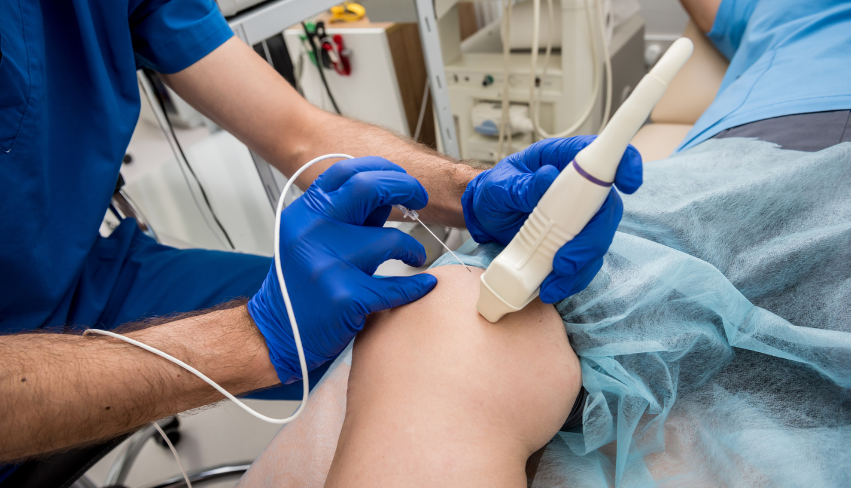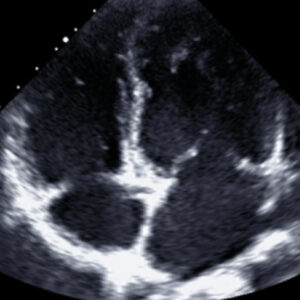Learn more about the Ultrasound Guided Procedures for Pain Medicine
- Knee – intra-articular joint injection, genicular nerve blocks
- Hip – hip joint injection, femoral nerve lateral femoral cutaneous nerve block, trochanteric bursal injections
- Shoulder – subdeltoid / subacromial bursaa injections, glenohumeral joint and acromioclavicular joint injections
- Back and neck – cluneal nerve block, piriformis injection and occipital nerve blocks
Who should attend
Pain medicine practitioners, anaesthetists, pain medicine fellows, chronic pain specialists, sports medicine physicians, orthopaedic surgeons, rheumatologists, GP’s with a special interest in pain medicineObjectives
On completion of this two-day clinically focused ultrasound program, learners will:- Navigate the machine controls and Implement strategies to optimize image quality in challenging clinical scenarios
- Practice scanning on live patient models to identify the key anatomical landmarks, their spatial relationships, and the implications for procedural accuracy and patient safety for the following procedures:
- knee – intra-articular joint injection, genicular nerve blocks
- hip – hip joint injection, femoral nerve lateral femoral cutaneous nerve block, trochanteric bursal injections
- shoulder – subdeltoid / subacromial bursaa injections, glenohumeral joint and acromioclavicular joint injections
- back and neck – cluneal nerve block, piriformis injection and occipital nerve blocks
- Describe optimum patient positioning and needle approach for each of the above listed procedures
- Practice ultrasound guided needle placement in-plane and out-of-plane on ultrasound phantoms
CME recognition

CPD Short Format Learning |
|
|
|
|
Features
- Modules (total) 7
- Skill level All
- Duration (days) 2
- Lectures (hours) 3.75
- Scan time (hours) 9.5
- Zedu redo Yes
Class times
Day 1: 0830 – 1700
Day 2: 0900 – 1700
Modules
Image Optimisation – interactive practical session
- Explore system controls
- Understand the impact of optimisation on the image
- Presets, frequency, depth, focus and gain
- How to label the image
- How to store and review images
Probe Manipulation
- Probe care
- Probe moves
- Probe grip
- Probe and screen orientation
- 3D awareness of the anatomical position of the organs
Procedural Guidance
- Principles of needle guidance
- Terminology – In-plane, out-of-plane, LAX and SAX
- Techniques to improve imaging
- limitations and pitfalls
- sonographic anatomy of common injection sites
- patient positioning
- needle approach
- equipment preparation
- ergonomics of safe procedures
- Clinical utility and applications
Scanning, scanning and more scanning of real people
Identify the anatomy and needle approach on real people
Stick needles into a wide variety ultrasound phantoms for procedural practice (we want our patients to come back 🙂 )
Procedures for Knee Pain
- Scan technique for intra-articular joint injections and genicular nerve blocks
- Sonoanatomy
- Recognise anisotropy
- Limitations and pitfalls
- Clinical utility and application
Scanning, scanning and more scanning of real people
Procedures for Hip Pain
- Scan technique for hip joint injections, treatment of greater trochanteric pain syndrome, femoral and lateral femoral cutaneous nerve blocks
- Sonoanatomy
- Recognise anisotropy
- Limitations and pitfalls
- Clinical utility and application
Scanning, scanning and more scanning of real people
Procedures for Shoulder Pain
- Scan technique subdeltoid / subacromial bursal injections, glenohumeral joint and acromioclavicular joint injections
- Sonoanatomy
- Recognise anisotropy
- Limitations and pitfalls
- Clinical utility and application
Scanning, scanning and more scanning of real people
Procedures for Back and Neck Pain
- Scan technique for cluneal nerve injections, piriformis muscle injections and occipital nerve blocks
- Sonoanatomy
- Recognise anisotropy
- Limitations and pitfalls
- Clinical utility and application
Scanning, scanning and more scanning of real people
CME details
ANZCA | Participants in the ANZCA CPD program can claim attendance under the Knowledge and Skills category ‘Short format learning’
A great training course is only the beginning of your ultrasound learning journey
To help you master ultrasound and lasting change from training we engage you from the outset
Before your course:
There are pre course activities & access to preparatory learning resources to maximise your in-class experience
During your course:
- Short, sharp information sessions to provide foundational knowledge and clinical context
- Lots of hands-on practical sessions with real people to scan (including for TV and obstetric scans). Our standardised patients models vary in age, size, shape and mobility to make the transition to clinical reality easier.
- Case studies led by practising clinicians to demonstrate clinical utility
- A variety of different machines to learn on
- At the conclusion of your course we’ll lead you to create a skills development action plan, creating a pathway that you can use to apply your newly acquired skills, promote clinical integration and ultimately reach your final objective – ultrasound competency
After your course:
The learning continues
- We encourage self-directed learning in the workplace with structured active learning plans
- A great selection of free access online medical ultrasound (FoamUS) learning resources
- You can subscribe to the weekly wrap – a weekly curation of ultrasound related hot tips and journal articles
- Be a part of our community of clever – Join our peer support network with our monthly “Coaching Corner” sessions. Send in your questions, join the live online meeting and have your questions answered.
The Zedu Redo – our commitment to you
We encourage you to refresh your training with us by taking up the opportunity to return within 12 months and do a complimentary redo of this course at no cost (subject to availability)
More Ways Zedu Can support your ultrasound skills development:
- Image review – details here
- Follow-up coaching with our Zedu coaches
- Coaching corner – monthly webinar
Ultrasound Guided Procedures for Pain Medicine
$2,399.00
Use ultrasound to safely guide pain management procedures & reduce complications.
Is your preferred course date full? Join our Waitlist Here
You may also like…
-
Lung Ultrasound Course$1,250.00
Learn how to integrate lung ultrasound into the assessment of the arrested, breathless, febrile or shocked patient. Utilise lung ultrasound for the diagnosis and management of covid-19….
Select options- 1 day -
Lung
-
Ultrasound Guided Vascular Access Course$1,250.00
Avoid complications and learn how to use ultrasound to guide your difficult peripheral and central vascular access procedures.
Select your date and enter your details to start your…
Select options- 1 day -
Vascular access
-
Focused Cardiac Ultrasound Course$3,465.00
Move beyond the basics and build your confidence to perform and interpret cardiac ultrasound. Master your spatial reasoning skills to get the best image possible for diagnosis.
Select your…
Select options- 3 days -
PE
Tamponade
RV/LV function
Doppler
Lung
Integration in arrest








